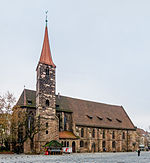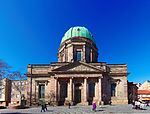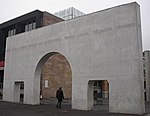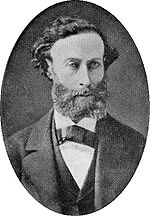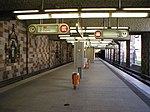Weißer Turm station
1978 establishments in West GermanyBuildings and structures completed in 1978Nuremberg U-Bahn stationsRailway stations in Germany opened in 1978

Weißer Turm station is a Nuremberg U-Bahn station, located on the U1 line. Located in the south-western part of Nuremberg's historical city and at the western end of the pedestrian-only shopping district. It serves as a destination for shoppers and shop employees during the day and provides transportation to the amusement venues (primarily bars and restaurants) located in the vicinity during the evenings. Like all subway stations in Nuremberg, it opens at about 5 am and closes at about 1 am Mondays to Sundays.
Excerpt from the Wikipedia article Weißer Turm station (License: CC BY-SA 3.0, Authors, Images).Weißer Turm station
Ludwigsplatz, Nuremberg Altstadt, St. Lorenz
Geographical coordinates (GPS) Address Nearby Places Show on map
Geographical coordinates (GPS)
| Latitude | Longitude |
|---|---|
| N 49.4508039 ° | E 11.0715905 ° |
Address
Ludwigsplatz
Ludwigsplatz
90403 Nuremberg, Altstadt, St. Lorenz
Bavaria, Germany
Open on Google Maps
